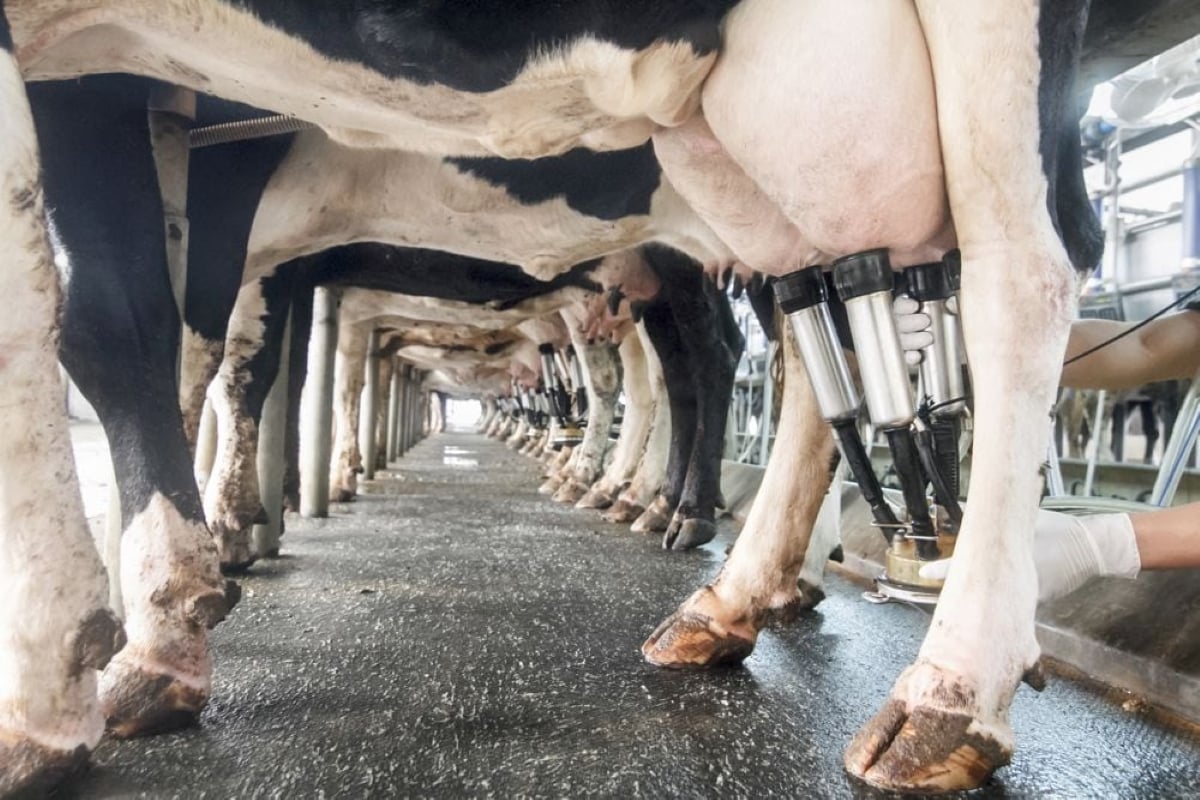Clubroot spores have been detected in canola fields across Manitoba, but a Swan River grower might be the first producer in the province with dramatic yield losses because of the disease.
Ryan Immerkar, an agronomist who owns RSI Agri-Coaching in Swan River, was called out to a canola field this fall to diagnose a production problem.
Immerkar’s client noticed, while combining canola in September, that a sizable piece within a field was generating poor yields.
The yield monitor showed that most of the field was around 50 bushels per acre, but a 10 to 15 acre patch was yielding 10 bu. per acre.
Read Also

Farm gate milk price to rise in 2026
The Canadian Dairy Commission will raise its farm gate milk price by 2.3255 per cent in February, the Crown corporation announced on Friday.
Following harvest, Immerkar dug up the roots of canola plants in the low yielding area. He found galls the size of quarters on the roots.
Clubroot is a soil borne disease that causes swellings, or galls, to form on the roots of canola plants. The galls cause the plants to die prematurely.
Immerkar suspected it was clubroot but sent tissue samples to a lab for confirmation.
“It came back positive,” said Immerkar, who is affiliated with Agri-Trend. “There’s more than one field now (on the affected farm) where it’s showing up.”
Anastasia Kubinec, Manitoba Agriculture’s oilseed specialist, said she’s heard talk of a clubroot incident in the Swan River area but wasn’t aware of the details.
The producer didn’t report the disease to the province.
Kubinec said the discovery isn’t surprising.
“The (clubroot spore) levels that we’re finding in some areas are higher. We do suspect that we will have … cases where clubroot galls (are) found on canola every year now.”
In the fall of 2013, Manitoba Agriculture confirmed the presence of clubroot symptoms on plants in two canola fields. Scientists had previously found clubroot spores in soil samples taken in Manitoba.
A Manitoba Agriculture clubroot distribution map indicates that two municipalities, Louise and Westlake-Gladstone, have fields with high levels of soil spores or cases with confirmed plant symptoms.
“We are finding it at low concentrations throughout the province. That’s strictly through our soil samples…. We have been telling producers, since 2012, you have to assume it’s probably within 50 kilometres of your farm,” Kubinec said.
“There may be more cases that are reported this fall…. Lots of guys seem to find it when they’re swathing or combining. There is a patch that just isn’t yielding.”
Clubroot has been in central Alberta for more than a decade and producers have adjusted to the reality, seeding varieties with resistance to the disease and growing canola less frequently, typically one crop in four years.
Immerkar said growers around Swan River, particularly those near the infected farm, will need to adopt a similar remedy to prevent disease spread.
“Be aware of it and be proactive. Don’t pretend like it didn’t happen,” he said. “I don’t think it’s the death sentence it used to be, 10 years ago. There are good clubroot resistant varieties and it’s just something that’s going to have to be managed.”
Alberta Agriculture’s website says the disease typically spreads when contaminated soil or plant material is transported from field to field.
“Thus, producers should follow the practice of cleaning soil and crop debris from field equipment before entering or leaving all fields. The equipment cleaning procedure involves knocking or scraping off soil lumps and sweeping off loose soil.”
Immerkar said the cleaning protocol might be a difficult adjustment for growers and agricultural service companies around Swan River.
“It can be tough because of custom sprayers … and the cleaning of tires and disinfecting quads.”
Contact robert.arnason@producer.com














